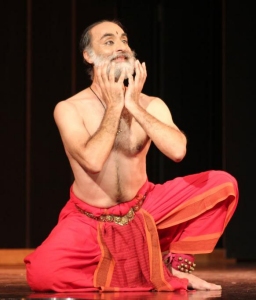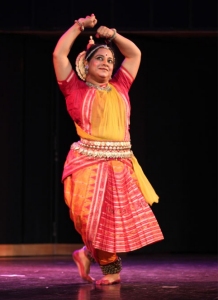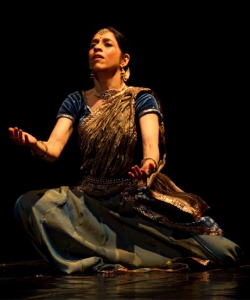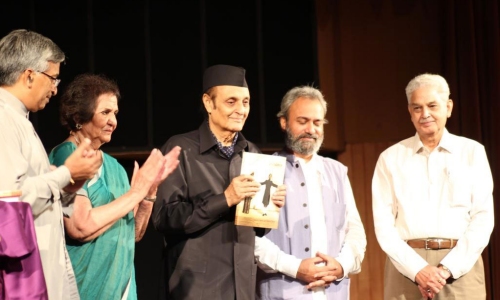
|   |

|   |
15 years of Attendance July 27, 2013 Attendance, India’s only yearbook on dance has completed 15 years. This last idea of father-figure of dance heritage and history, late Prof. Mohan Khokar, was implemented in 1999 by his son and successor, reputed critic-historian Ashish Khokar. Mohan Khokar had Arnold Haskell's Ballet Annual in England of the 1950s as a model. 15 years in today’s age of instant Facebook and Twitter where info travels space in nano seconds, is akin to being a yuga (era)! Thus, attendance proves commitment to its muse against all odds and a staying power few can match, especially when done single handedly. “When mortality rates of mainstream magazines with big budgets and backing can be so high, what of dance or music journals? To bring out a hardbound, lavish, art paper dance journal in these times may be laudable but also foolhardy because dancers rarely buy journals or books unless featured in them, preferably on the cover! The average Indian dancer does not read much, unless it concerns them or their form directly,” says Ashish Khokar. No dance journal in India (or out of India) is hardbound, an international standard for acquisition by libraries and educational foundations. Many students and common public read one copy over and over again (in schools, universities or libraries) so a journal has either to be bound or hardbound. In its 5th year of existence, its founder editor-publisher Ashish Khokar realised that and changed gears to make soft copy to hardbound editions, despite hard times attendance faced initially, in absence of any grant from government or industry. This lack of support continues even in its 15th year of existence. Till date, attendance gets no grant from the Sangeet Natak Akademi or Ministry of Culture.  Navtej Johar Pic: Amit Dasgupta The attendance launch took place in Delhi’s India Habitat Centre on July 18th. Habitat rarely gives out its biggest hall - the Stein - seating 450, for book events but made an exception as the editor-publisher is an old Delhiite, and the evening also platformed 3 distinguished senior dancers, each representing India’s popular and principally learnt mainstream classical forms - Bharatanatyam, Odissi and Kathak. Navtej Singh Johar represented the beauty of the margam, repositioned to dance an ode to Madurai Meenakshi who seems to have possessed him, many felt. Odissi by seasoned artiste Ambika Paniker brought out the grace and lyricism set to poetry and motion through a saabhinaya (a pallavi combined with abhinaya - a speciality of the Guru Mayadhar Raut style) Ajo shri Gostho Chandrama. Aditi Mangaldas showed her firm foundation in Kathak. Excellent tayari dazzled with aesthetics of light, music, costumes. Even her musicians sat in uniformed black attire, showing an eye for detail. Split second footwork and fine form made her a sterling dancer. Guru Birju Maharaj seated in the hall looked like a proud guru. The whole evening was well constructed and conducted by Delhi based senior Odissi dancer Kiran Segal, whose clear commentary and stable countenance set the tone.  Ambika Paniker Pic: Bibian Cherian  Aditi Mangaldas Pic: Dinesh Khanna So, what has attendance really achieved in 15 years? “It has created pan Indian readership. It has especially encouraged small town writers and helped PhD students and researchers. It has undertaken subjects in dance few ever did: dance scene in Gujarat (2004 issue), Traditions of East (2007 issue), Purusha - the Male soloist (2010 issue) and this focus on male dancers has led to spin off of 5 new male specific festivals and countless seminars. The Ashtanayikas (2012 issue) and earlier ones on Bharatanatyam, Temple Festivals - each is held to be a collector's item. Attendance has also stayed away from routine PR type reviews, so endemic in other platforms and journals and it has helped small town India connect with metros and metros with the real big world, internationally,” says Ashish Khokar. 
Dr. Suresh Goel, Shanta Serbjeet Singh, Dr. Karan Singh, Ashish Khokar, Dr. Ashok Pradhan
Photo: Amit Dasgupta Dr. Karan Singh, MP, President of ICCR and Chancellor of BHU (Benaras Hindu University) commended Ashish Khokar for commitment to dance-art and long years of showing the way. Shanta Serbjeet Singh, Vice Chair of SNA (Sangeet Natak Akademi) presided and Dr. Suresh Goel said attendance is now a model dance journal for all countries to follow. Dr. Ashok Pradhan, Director of Delhi Kendra of Bharatiya Vidya Bhawan took pride that Ashish Khokar was their alumni. A short film compilation on last 15 years of journey of attendance was shown where one saw the late Subuddu at one launch and Zohra Segal, now 100, dancing at another. Continuing the university and academic bent was a launch at MSU, Baroda (Bangalore having taken place on World Dance Day on April 28/29 and Berlin on June 22) where the Vice Chancellor of MS University, Dr. Yogesh Singh, released the book and commended Ashish Khokar for serving Baroda where he was born. He handed the first copy to Dr. RC Mehta, who was the first Principal of the Music College. Dr. MP Chhaya, the dynamic educationist, who steered the Navodya scheme of schools for the government of India, was Ashish Khokar's school principal in Delhi (Bharatiya Vidya Bhawan). Dr. Parul Shah, the creative power house of many serious dance initiatives in Baroda, in addition to a full time university teaching job and presently also the Dean of the Performing Arts Dept and Head of the Dance Dept, MSU, hosted and planned the whole function in the same hall where 50 years ago, Mohan Khokar came from Madras (having been at Kalakshetra as the first male student from 1940-45) as the first Head of the first university in India offering dance at graduate levels! The wheel had come a full circle. |